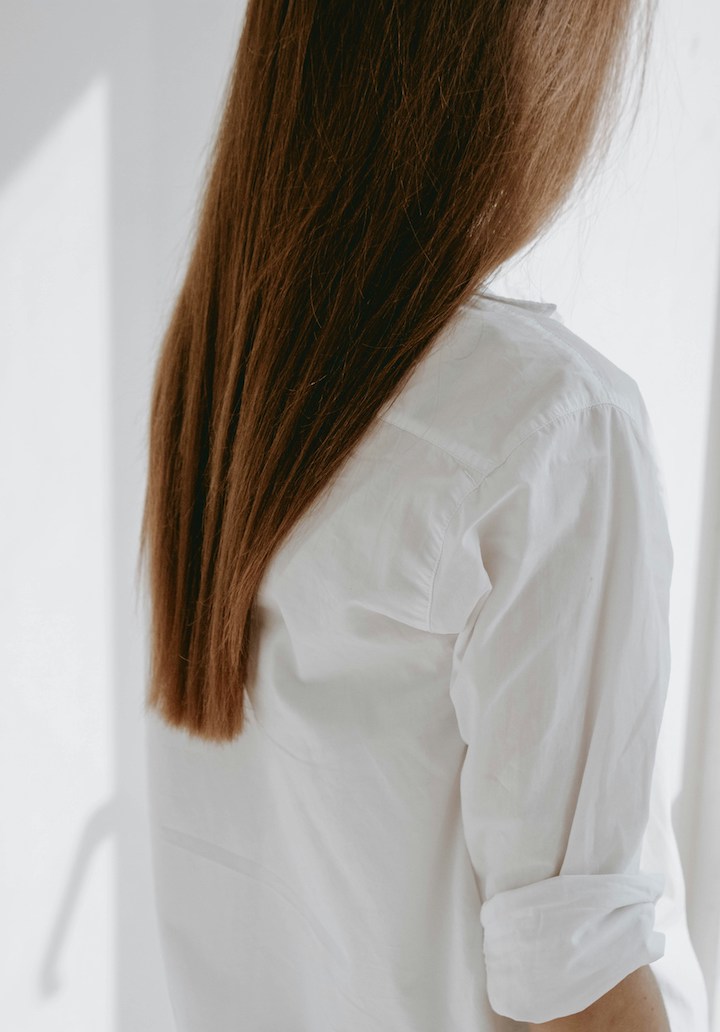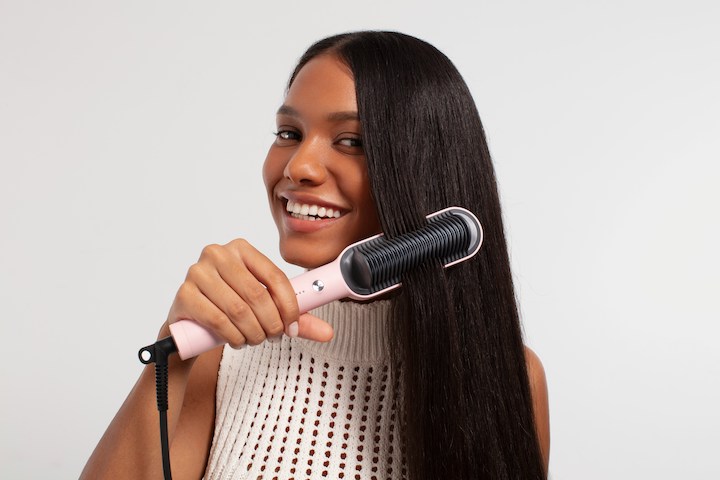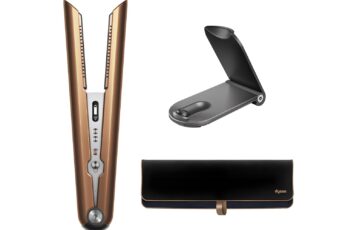Let’s be real for a second — you don’t want to spend time straightening your hair only for it to turn into a frizzy mess overnight, right? That smooth, sleek finish you worked for deserves to last. And no, you don’t need a salon or heat tools every morning to keep it that way. You just need to learn a few straight hair wrapping methods that actually work — and feel like something you can do half-asleep.
If you’ve ever wrapped your hair before bed, you already know the deal. But if you haven’t, don’t worry. I’ll walk you through everything. You and I are going to break it down together — step by step — until wrapping your hair becomes something you look forward to at night. It’s simple. It’s protective. And once you get the hang of it, your mornings will be so much easier.
Ready to get into it? Let’s go.
Table of Contents
Key Takeaways
- Wrapping helps straight hair stay smooth, shiny, and protected overnight.
- The doobie wrap and cross-wrap are great for most hair lengths and styles.
- Always use a satin or silk scarf or wrap cap to secure the wrap.
- Don’t wrap damp hair, and don’t make it too tight.
- Unwrap gently and style with care the next day.
Why Wrap Straight Hair at All?
I used to think wrapping was only for curls or chemically relaxed hair. Turns out, that’s not true. Straight hair wrapping methods work wonders for natural, pressed, or flat-ironed hair too.
Here’s what’s really going on when you sleep:
- Your pillowcase sucks up moisture from your hair.
- Your hair rubs against the fabric and causes breakage.
- Even if your strands are straight, friction can still create frizz and flyaways.
Wrapping protects your hair from all that. It’s like tucking your strands into bed and telling them, “Don’t worry, I’ve got you.” And honestly, when you unwrap it in the morning and your hair still feels soft and fresh? You’ll thank yourself.

1. The Classic “Doobie” Wrap
This is one of the most popular straight hair wrapping methods, and for good reason. If your hair’s been flat-ironed or silk-pressed, this is the one that keeps everything in place overnight.
Here’s how you do it:
1. Start with dry, detangled hair.
Use a wide-tooth comb to remove knots. Your hair needs to be smooth for the wrap to stay in place.
2. Choose your side.
You’ll wrap your hair in a circular motion around your head. Start by combing everything to one side — left or right.
3. Begin wrapping.
Using a paddle brush or a comb, start brushing your hair in a circular motion around your head. Imagine you’re creating a swirl.
4. Secure as you go.
Use bobby pins or wrap clips to hold sections down, especially if your hair keeps slipping.
5. Wrap it up.
Once everything is smooth and flat against your head, cover it with a satin scarf or wrap cap.
You’ll wake up with smooth, tangle-free hair. And if you do it right, no one will know you even slept on it.
Also Read: Shocking Truths About Hair Curl Pattern Alteration You Need To Know
2. Cross-Wrap Method
This one’s perfect for straight hair that needs a bit more shape without being too flat. I like to use this when I don’t want all my hair wrapped in one direction — you know, that lopsided look? Yeah, this avoids that.
Here’s the breakdown:
- Part your hair down the middle.
- Take the right section and sweep it across to the left, wrapping it flat around your head.
- Pin it or hold it in place.
- Do the same with the left side, wrapping it over the right.
- Smooth everything out with a paddle brush.
- Tie it up with a scarf or secure it under a wrap cap.
This method spreads volume more evenly and doesn’t press everything to one side. If your hair tends to fall flat after a doobie wrap, give this one a try.
3. Wrap With a Scarf or Wrap Cap
I can’t stress this part enough: your wrap is only as good as what you put over it. The scarf or wrap cap is what holds everything together while you sleep.
But not all materials are created equal.
- Go with satin or silk — they’re smooth and don’t absorb moisture like cotton.
- Make sure it fits snug but not too tight. You don’t want to wake up with lines on your forehead.
- If you’ve ever had your scarf slide off in the middle of the night, I feel your pain. Here’s how to stop that:
- Tie your scarf at the nape of your neck, not on top of your head.
- Use a wide scarf instead of a skinny one.
- Add a wrap cap over the scarf for double security.
You don’t want to do all that wrapping just to find your hair halfway loose in the morning, right?

4. Heatless Wrap Using Magnetic Rollers
Sometimes you want straight hair, but not stick-straight. You want that little bend, that soft curve at the ends. That’s where magnetic rollers come in.
Here’s how you do it:
- Start with dry hair.
If your hair’s damp, wait until it’s about 90% dry before wrapping. - Part your hair into sections.
The bigger the roller, the looser the bend. - Roll each section toward your scalp, securing with clips.
- Once all sections are rolled, gently wrap a scarf or bonnet over everything.
This is great when you want straight hair with a little volume or bounce. And guess what? You didn’t have to plug in a single styling tool.
Quick Tips to Make Wrapping Work Better
Over the years, I’ve learned a few tricks that make a huge difference. These little details can take your wrap from “meh” to magical.
- Wrap only dry hair.
Wet hair stretches and weakens easily. Always dry it first. - Use a brush, not just your fingers.
Smoothing is key. A paddle brush helps your hair lay flat and stay wrapped longer. - Don’t overload with product.
A tiny bit of serum or leave-in is fine. Too much, and your wrap slips right off. - Go in the same direction every time.
Unless you want to change the part or shape, keep it consistent. Your hair “remembers” the direction over time.
What to Avoid
Let’s talk about what not to do. Trust me, I’ve made these mistakes so you don’t have to.
- Don’t wrap damp or wet hair.
You’re asking for mildew, flat roots, or even breakage. - Skip rough pins or tight bands.
Bobby pins with worn tips or cheap clips can snag and tear your hair. - Avoid wrapping too tight.
You’re not trying to win a competition here. If your scalp feels sore, loosen up. - Don’t ignore your ends.
Tuck them in gently — they need just as much protection.
Wrapping for Short Straight Hair
You don’t need long hair to benefit from wrapping. Even short straight styles can get frizzy or lose shape overnight.
Here’s what you can do:
- Use smaller sections when wrapping.
That gives you more control and holds better. - Rely on a snug wrap cap.
You might not need pins if your hair is short enough. - Apply a little edge control or serum before wrapping.
This helps smooth down flyaways and gives a polished look the next day.
Check Out: Best Color-Preserving Hair Treatments That Actually Work
What to Do in the Morning
Unwrapping your hair is just as important as wrapping it.
- Take your time.
Don’t just pull off the scarf and start tugging. - Use a wide-tooth comb or a soft paddle brush.
Start at the ends and work your way up. - Flip your hair and shake it out if needed.
This adds volume and movement back in. - Finish with a drop of serum.
Not too much — just enough to smooth the ends.
That’s it. Your hair’s ready for the day, and you didn’t have to spend an hour in front of the mirror.

Conclusion
If you’re tired of waking up with messy, dry, or frizzy hair, wrapping is your quiet little solution. These straight hair wrapping methods don’t just protect your style — they protect your time and peace of mind too.
The doobie wrap, the cross-wrap, magnetic rollers — they’re all easy once you try them a couple of times. And the best part? You’re taking care of your hair while you sleep.
It’s low effort. High reward. And once you get the rhythm, wrapping becomes second nature. So try it tonight. Your hair will thank you in the morning.
Frequently Asked Questions
Can I wrap my straight hair even if it’s thin?
Yes. In fact, wrapping helps keep thin hair from tangling or breaking while you sleep.
Will wrapping make my hair look flat?
Not if you fluff it out in the morning or use a cross-wrap method. You can also flip your head and shake out the roots for volume.
Do I have to use pins when wrapping?
Not necessarily. If your scarf or wrap cap is snug enough, and your hair holds shape easily, you can skip the pins.
How often should I wrap my hair?
If you want to maintain your straight style and reduce breakage, wrapping nightly is the way to go.



